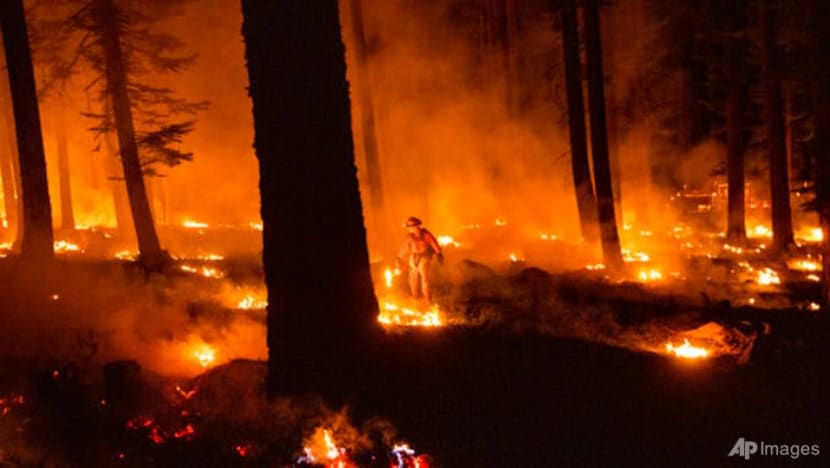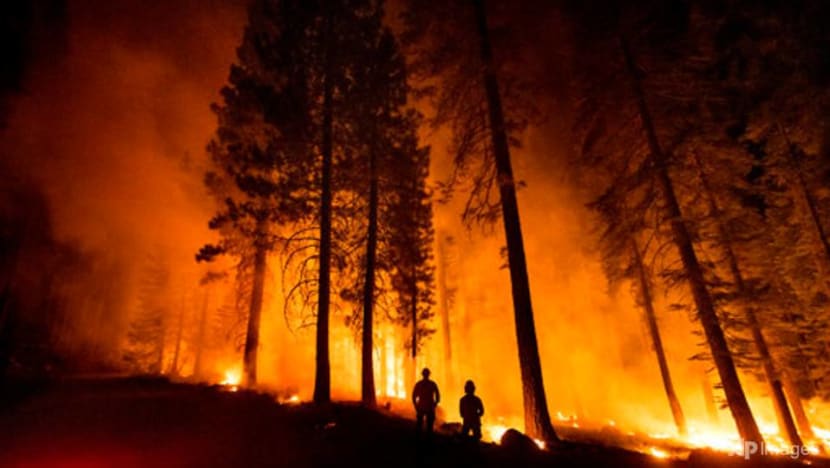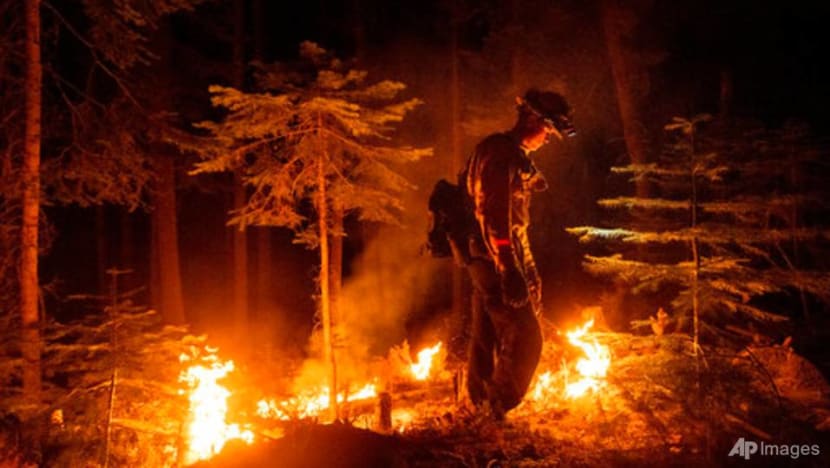California wildfire flares but within line crews have built
California’s largest wildfire so far this year was flaring up Friday (Jul 30) but it was because the flames were chewing through unburned islands of vegetation within a perimeter that firefighters have built, authorities said.

A firefighter uses a drip torch to ignite vegetation while trying to stop the Dixie Fire from spreading in Lassen National Forest, California., on Jul 26, 2021. (Photo: AP/Noah Berger)
PARADISE, California: California’s largest wildfire so far this year was flaring up Friday (Jul 30) but it was because the flames were chewing through unburned islands of vegetation within a perimeter that firefighters have built, authorities said.
The Dixie Fire covered 974 square kilometres in the mountains of Northern California where 42 homes and other buildings have been destroyed and more than 10,000 are still threatened.
The vegetation burning inside the fire on Thursday produced a huge “fire cloud", towering columns of smoke and ash that can pose a danger to firefighters. Residents were given assurances that it had been expected and would happen again but did not mean crews were losing control they have the fire.

“There's nothing close to our line right now. It's all interior fuels burning,” Mike Wink, an incident commander, said in an online briefing.
The fire northeast of the town of Paradise, which was largely destroyed in 2018 by the nation's deadliest wildfire in a century, has been burning since Jul 13 and is more than 20 per cent contained.
In remote southern Oregon, the nation’s largest wildfire was more than halfway contained after scorching over 1,673 square kilometres in the Fremont-Winema National Forest. Active fire behavior there also was mainly interior pockets of vegetation burning, a situation report said.

A historic drought and recent heat waves tied to climate change have made wildfires harder to fight in the American West. Scientists say climate change has made the region much warmer and drier in the past 30 years and will continue to make weather more extreme and wildfires more frequent and destructive.
The US Drought Monitor reported this week that while a robust monsoon has delivered drought-easing rainfall to the Southwest, critically dry conditions persist across Northern California and the Northwest, where there has been an expansion of “exceptional drought,” the worst category.

Nearly 22,000 firefighters and support personnel were battling 83 large, active wildfires covering 7,044 square kilometre in 13 states Friday, the National Interagency Fire Center said.
“Fire weather and the conditions of the fuels across the country continue to challenge wildland fire managers,” an agency statement said.












